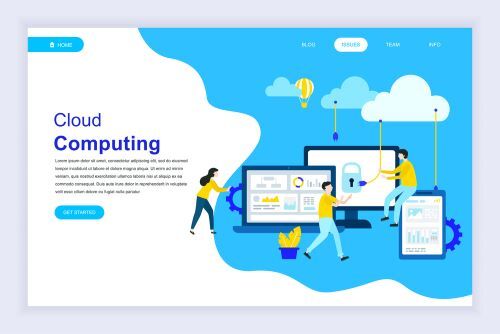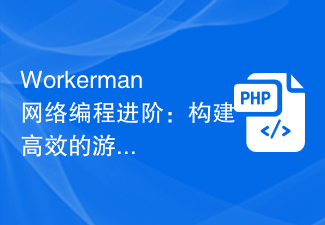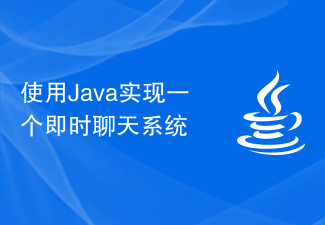 System Tutorial
System Tutorial LINUX
LINUX A complete guide to Linux application development, from installation to debugging
A complete guide to Linux application development, from installation to debugging1. How to start Linux application development?
Before starting to develop Linux applicationslinux application development, you need to first install a Linux system, and you can choose mainstream versions such as Ubuntu and Fedora. After the driver is successfully driven, you can use C/C-like programming languages to create applications.
2. How to compile and run Linux applications?
In order to successfully compile and run Linux applications, we need to use the gcc compiler built into the GNU toolset. First, enter the "gcc" command in the terminal to convert the source code into an executable file; next, enter the "./" directive to start and run the generated executable file.

3. How to debug Linux applications?
You can try to use the gdb debugger for application debugging work on Linux. Just enter the 'gdb' command Hongqi linux in the system terminal. After starting the debugging environment, you can start setting breakpoints, viewing variables and other debugging work.

4. How to communicate with external devices?
In the Linux system, there are various interfaces and library functions to help us establish connections with external devices. Compared with other technologies, users can easily connect devices by flexibly using serial communication library functions or network programming library functions.

5. How to handle multi-threading and inter-process communication?
In the field of Linux application development, we can use thread library functions to build multi-threaded systems. At the same time, linux application development achieves synchronization by using technical means of mutex locks and condition variables. As for inter-process communication, it is mainly achieved with the help of three tools: pipes, message queues and shared memory.
6. How to optimize the performance of Linux applications?
In order to improve the efficiency of Linux applications, we recommend that you consider using performance analysis tools like perf and valgrind. These tools provide you with support in finding and optimizing performance bottlenecks.

7. How to publish and deploy Linux applications?
In order to facilitate the release and deployment of Linux applications, we will collect all executable files and associated library files into a beautiful software package qq linux, and attach an easy-to-use installation script. With this installation script, users can complete the corresponding installation and configuration with just a little ease!
Understanding the above issues can help you master the basic principles and practical skills of Linux application development more deeply and comprehensively. In practice, you can continue to dig deeper according to your personal needs. I hope you will achieve fruitful results in your Linux application development journey!
The above is the detailed content of A complete guide to Linux application development, from installation to debugging. For more information, please follow other related articles on the PHP Chinese website!
 如何在Go中使用DNS解析?May 11, 2023 pm 04:40 PM
如何在Go中使用DNS解析?May 11, 2023 pm 04:40 PM随着互联网技术的不断发展,DNS解析越来越成为程序开发中不可忽视的要素。在Go编程中,如何使用DNS解析呢?这篇文章将探讨这方面的知识。DNS解析是什么?DNS解析是指域名系统解析,是互联网传输数据的基础。每个网站都会拥有一个域名,如www.google.com,该域名可以将网站的IP地址委托给DNS服务器管理,当用户在浏览器输入该网站域名时,DNS服务器将
 如何使用Go语言中的网络编程函数实现UDP组播通信?Jul 30, 2023 am 08:12 AM
如何使用Go语言中的网络编程函数实现UDP组播通信?Jul 30, 2023 am 08:12 AM如何使用Go语言中的网络编程函数实现UDP组播通信?简介:网络编程是现代软件开发中非常重要的一部分,而UDP组播通信是一种基于UDP协议的多播通信方式,它能够在一个发送者和多个接收者之间进行数据传输。本文将介绍如何使用Go语言中的网络编程函数实现UDP组播通信。一、UDP组播概述1.1UDP协议UDP(UserDatagramProtocol)是一种无
 标题标签:你想知道的一切Sep 01, 2023 pm 07:33 PM
标题标签:你想知道的一切Sep 01, 2023 pm 07:33 PMHTML,用于构建网页的语言,严重依赖于标头标签。它们用于排列和组织网页内容,使其更易于阅读和理解。标题标签范围从H1到H6。H1是最重要的标题标签,而H6是最不重要的。这些标题标签有助于组织页面的内容,使其更易于阅读和导航。它们还用于告知用户和搜索引擎有关页面内容的信息,这对于SEO至关重要。在本文中,我们将讨论什么是标头标签以及如何有效地使用它们。什么是标题标签?网页的标题和副标题是使用标题标签指定的。尽管SEO行业也经常将这些元素称为“标题标签”,但H1、H2等中的“H”正式代表“标题元素
 PHP中如何进行高性能计算和网络编程?May 22, 2023 am 08:13 AM
PHP中如何进行高性能计算和网络编程?May 22, 2023 am 08:13 AM随着互联网的蓬勃发展,PHP成为了其中一个常用的编程语言。作为一种面向脚本的语言,PHP对于快速构建Web应用非常方便。然而,PHP在处理大量数据和高并发时,性能问题也相当显著。那么,如何在PHP中进行高性能计算和网络编程呢?一、加速PHP计算性能编码优化:在编写代码时,尽量避免使用循环、递归等耗费资源的语法。同时,合理使用PHP内置函数,避免使用过多的自定
 Workerman网络编程进阶:构建高效的游戏服务器应用程序的实践方法Aug 05, 2023 am 10:13 AM
Workerman网络编程进阶:构建高效的游戏服务器应用程序的实践方法Aug 05, 2023 am 10:13 AMWorkerman网络编程进阶:构建高效的游戏服务器应用程序的实践方法引言:随着网络游戏行业的蓬勃发展,构建高效的游戏服务器应用程序变得越来越重要。Workerman作为一款高性能的PHP网络编程框架,为我们提供了构建高效游戏服务器的良好基础。本文将介绍一些实践方法,帮助读者更好地利用Workerman构建高效的游戏服务器应用程序。一、选择合适的网络通信协议
 使用Java实现一个即时聊天系统Jun 18, 2023 am 09:02 AM
使用Java实现一个即时聊天系统Jun 18, 2023 am 09:02 AM随着互联网的发展和普及,人们越来越需要即时聊天工具来方便交流,特别是在工作或学习中需要与同事或同学沟通讨论的时候。本文将介绍如何使用Java实现一个基于TCP协议的即时聊天系统。系统架构设计本即时聊天系统采用C/S架构,客户端和服务器之间通过TCP协议进行通信。客户端主要负责用户交互和消息发送,服务器则负责接收和处理消息,并将消息转发给指定的客户端。技术选型
 如何使用PHP进行网络编程?May 13, 2023 am 08:13 AM
如何使用PHP进行网络编程?May 13, 2023 am 08:13 AMPHP是一种最常用的开源Web开发语言之一,它不仅适用于Web编程,还可以用于网络编程。网络编程是指用计算机网络连接两个或多个设备,让它们之间可以进行数据交换和通信的一种编程技术。使用PHP进行网络编程可以轻松地创建基于网络的应用程序,例如Web应用程序、移动应用程序、数据采集工具等等。那么,如何使用PHP进行网络编程呢?确定你要创建的网络应用程序类型在使用
 PHP8.0中的Socket编程May 14, 2023 am 08:27 AM
PHP8.0中的Socket编程May 14, 2023 am 08:27 AM随着软件发展和互联网的普及,网络编程越来越重要,而Socket编程是实现网络编程的最基础和底层的功能之一。而随着PHP8.0的发布,我们可以看到PHP引入了一些新的特性和优化。在本文中,我们将探讨在PHP8.0中如何实现Socket编程。什么是Socket编程?Socket是一种用于网络通信的编程方式,可以建立客户端和服务器之间的连接。以Web开发中最常见的


Hot AI Tools

Undresser.AI Undress
AI-powered app for creating realistic nude photos

AI Clothes Remover
Online AI tool for removing clothes from photos.

Undress AI Tool
Undress images for free

Clothoff.io
AI clothes remover

AI Hentai Generator
Generate AI Hentai for free.

Hot Article

Hot Tools

EditPlus Chinese cracked version
Small size, syntax highlighting, does not support code prompt function

ZendStudio 13.5.1 Mac
Powerful PHP integrated development environment

VSCode Windows 64-bit Download
A free and powerful IDE editor launched by Microsoft

SublimeText3 Mac version
God-level code editing software (SublimeText3)

Dreamweaver Mac version
Visual web development tools




